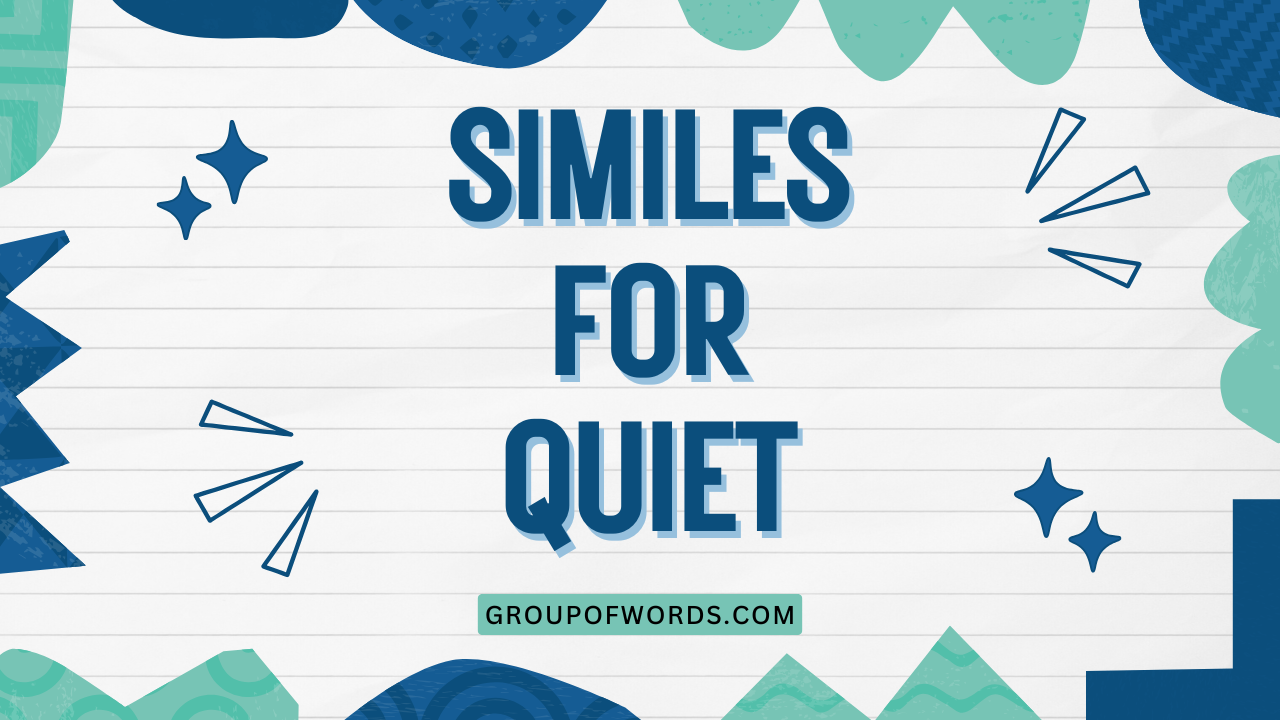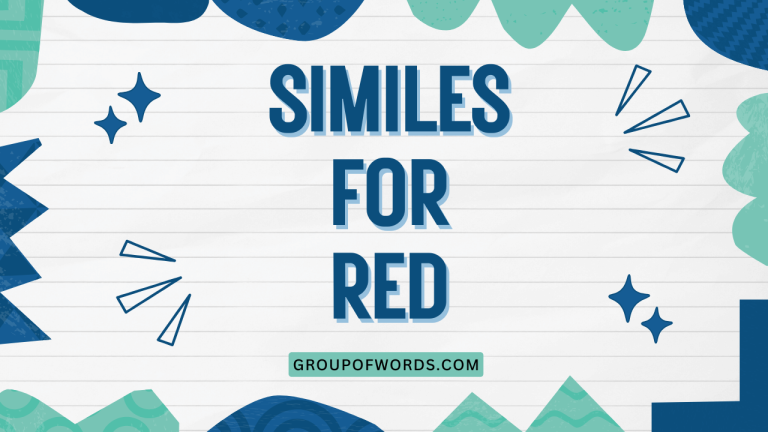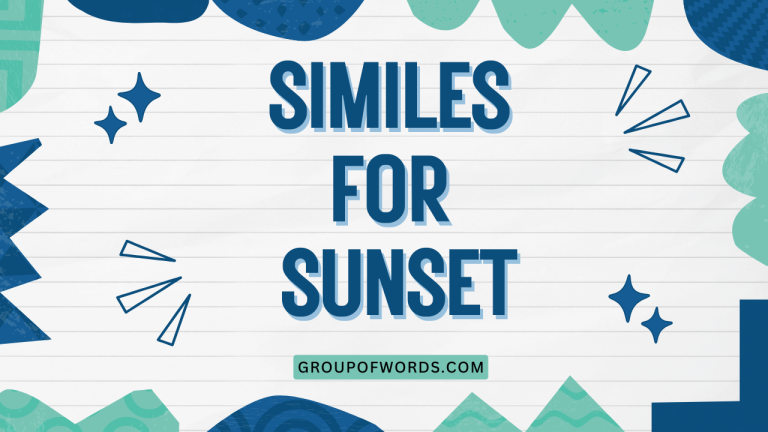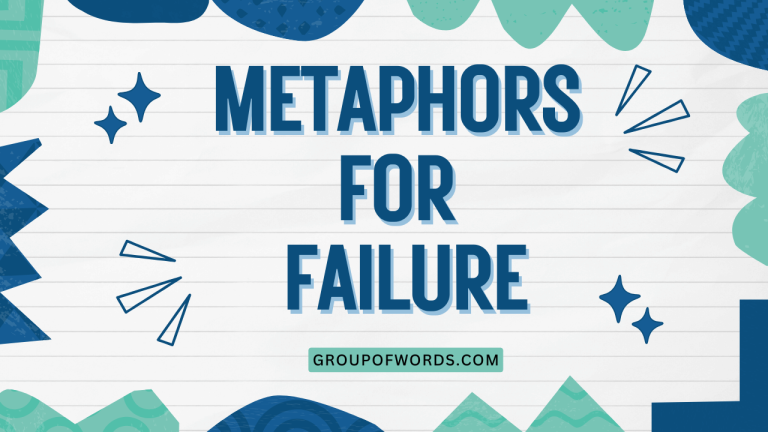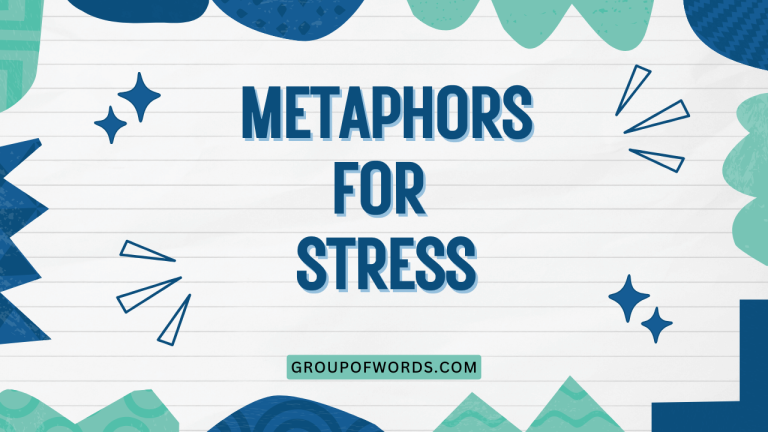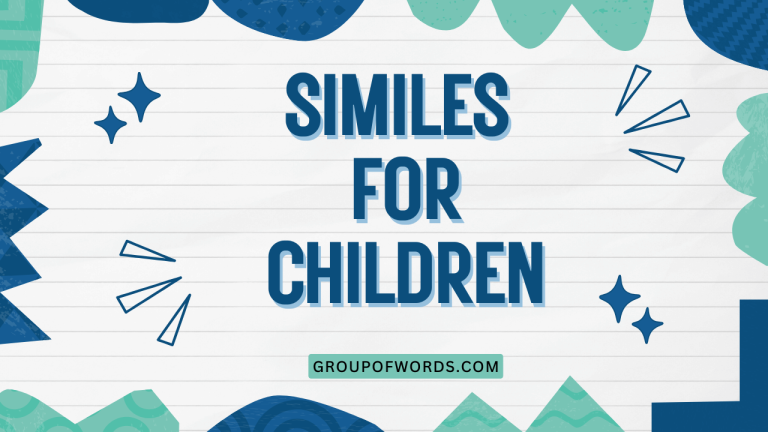Similes for Quiet: A Comprehensive Guide
Understanding similes is crucial for enhancing your descriptive writing and adding vivid imagery to your language. Similes, which compare two unlike things using “like” or “as,” can be particularly effective when describing abstract concepts such as quietness.
This article provides a comprehensive exploration of similes for quiet, offering definitions, examples, usage rules, and practice exercises. This guide is perfect for students, writers, and anyone looking to improve their command of the English language and creative expression.
Table of Contents
- Introduction
- Definition of Simile
- Structural Breakdown of Similes
- Types of Similes
- Examples of Similes for Quiet
- Usage Rules for Similes
- Common Mistakes with Similes
- Practice Exercises
- Advanced Topics
- FAQ
- Conclusion
Introduction
Similes are powerful tools in the world of language, allowing us to paint vivid pictures with words by drawing comparisons between seemingly unrelated things. When we want to describe something intangible like “quiet,” similes become even more valuable.
They help us transform an abstract concept into something more concrete and relatable. Mastering the use of similes can significantly improve your writing, making it more engaging and descriptive.
This article will provide you with a comprehensive understanding of similes for describing quiet, complete with examples, rules, and exercises to refine your skills.
Definition of Simile
A simile is a figure of speech that directly compares two different things using the words “like” or “as.” The purpose of a simile is to create a vivid image or emphasize a particular quality by associating it with something more familiar or concrete. Similes are a fundamental part of figurative language, used extensively in literature, poetry, and everyday conversation to enhance description and understanding.
Classification of Similes
Similes fall under the broader category of figurative language, which includes metaphors, personification, and hyperbole. They are a type of comparison, but unlike metaphors, they explicitly state the comparison using “like” or “as.” This direct comparison makes similes more accessible and easier to understand, while still adding depth and color to writing.
Function of Similes
The primary function of a simile is to enhance description. By comparing something to something else, a simile can highlight specific characteristics or create a particular mood. For example, saying “the night was as dark as ink” not only describes the darkness but also evokes a sense of mystery and foreboding. Similes can also clarify understanding by relating an unfamiliar concept to something more familiar. Finally, similes can add emotional impact to writing, making it more engaging and memorable.
Contexts for Using Similes
Similes are appropriate in a wide range of contexts, from creative writing and poetry to everyday conversation and even technical writing. In creative writing, similes can add depth and richness to descriptions, while in everyday conversation, they can make your language more expressive. Even in technical writing, similes can be used to explain complex concepts in a more accessible way. The key is to use similes judiciously and to choose comparisons that are both accurate and effective.
Structural Breakdown of Similes
Understanding the structure of a simile is essential for using it effectively. A simile typically consists of three main components: the subject being described, the comparison word (“like” or “as”), and the object to which the subject is being compared.
Let’s break down each component in more detail.
The Subject
The subject is the thing you are trying to describe. It can be a noun, a pronoun, or even an abstract concept.
For instance, in the simile “the silence was like a tomb,” the subject is “the silence.” It’s the quality or entity you want to illuminate through comparison.
The Comparison Word
The comparison word is the linchpin of the simile, explicitly stating the comparison. The two most common comparison words are “like” and “as.” While they are often interchangeable, there can be subtle differences in their usage.
“Like” is generally used for a more general comparison, while “as” can be used to emphasize a specific quality. The phrase “as [adjective] as” is a common pattern.
The Object of Comparison
The object of comparison is the thing to which the subject is being compared. It should be something that shares a relevant quality with the subject.
In the example “the silence was like a tomb,” the object of comparison is “a tomb.” The comparison highlights the shared quality of stillness and emptiness.
Putting it All Together
The basic formula for a simile is: Subject + Comparison Word + Object of Comparison. By understanding this structure, you can create your own similes to effectively describe a wide range of things.
The key is to choose an object of comparison that is both relevant and evocative, creating a strong and memorable image in the reader’s mind.
Types of Similes
While all similes share the basic structure of comparing two things using “like” or “as,” they can be further categorized based on their purpose or the type of comparison they make. Understanding these different types can help you choose the most effective simile for a particular situation.
Descriptive Similes
Descriptive similes are used to provide a more vivid and detailed description of something. They focus on highlighting specific qualities or characteristics of the subject.
These are the most common types of similes.
Emphasizing Similes
Emphasizing similes are used to emphasize a particular aspect or quality of the subject, often to create a stronger emotional impact. They are designed to draw attention to a specific characteristic and make it more memorable.
Explanatory Similes
Explanatory similes are used to clarify or explain something by comparing it to something more familiar or understandable. They are particularly useful when describing complex or abstract concepts.
Examples of Similes for Quiet
Now, let’s explore a wide range of similes specifically designed to describe quietness. These examples are categorized to illustrate the different types and nuances of comparison that can be used.
Table 1: Descriptive Similes for Quiet
The following table provides examples of descriptive similes used to illustrate the concept of quiet, focusing on its characteristics and qualities.
| Simile | Explanation |
|---|---|
| As quiet as a mouse | Describes a very subtle or hushed quietness. |
| As quiet as a graveyard | Conveys a solemn and still quietness, often associated with death. |
| As quiet as a sleeping baby | Suggests a peaceful and undisturbed quietness. |
| As quiet as a library | Implies a respectful and studious quietness. |
| As quiet as a shadow | Describes a quietness that is almost imperceptible. |
| As quiet as a church mouse | Similar to “as quiet as a mouse,” but with added religious connotation. |
| As quiet as the eye of a storm | Suggests a deceptive quietness before or after chaos. |
| As quiet as a held breath | Conveys a tense and anticipatory quietness. |
| As quiet as a secret | Implies a hidden and concealed quietness. |
| As quiet as a forest at dawn | Describes a natural and serene quietness. |
| As quiet as dust | Suggests a stillness and lack of activity. |
| As quiet as a pond on a windless day | Conveys a smooth, undisturbed quietness. |
| As quiet as a snowfall | Implies a soft, enveloping quietness. |
| As quiet as the grave | Similar to “as quiet as a graveyard,” emphasizing finality. |
| As quiet as a statue | Describes an immobile and silent quietness. |
| As quiet as a closed book | Suggests a hidden and unrevealed quietness. |
| As quiet as the night | Conveys a dark and mysterious quietness. |
| As quiet as a whisper | Describes a very soft and gentle quietness. |
| As quiet as a dream | Implies an ethereal and unreal quietness. |
| As quiet as the dawn before the birds awake | Suggests a brief, pristine moment of silence. |
| As quiet as a vacuum | Describes an absolute and complete absence of sound. |
| As quiet as a padded room | Conveys a sense of enforced or unnatural quiet. |
| As quiet as a thief in the night | Implies a stealthy and secretive quietness. |
| As quiet as a forgotten memory | Suggests a quietness that is both profound and melancholic. |
Table 2: Emphasizing Similes for Quiet
The following table showcases similes that emphasize the intensity or significance of quiet, often to create a strong emotional impact.
| Simile | Explanation |
|---|---|
| The silence was like a heavy blanket | Emphasizes the oppressive and all-encompassing nature of the quiet. |
| The stillness was like being underwater | Conveys a sense of being cut off from the world, emphasizing the profound quiet. |
| The quiet was as thick as fog | Highlights the density and impenetrability of the silence. |
| The silence felt like a physical weight | Emphasizes the tangible and burdensome nature of the quiet. |
| The quiet was like a scream trapped inside | Suggests a suppressed and intense quietness. |
| The silence echoed like a gunshot | Emphasizes the unexpected and jarring nature of the quiet. |
| The quiet pressed down like a judgment | Conveys a sense of foreboding and unease. |
| The silence was as deafening as a roar | Highlights the paradox of a powerful and overwhelming quiet. |
| The quiet stretched on like an eternity | Emphasizes the seemingly endless duration of the silence. |
| The silence was a tangible presence, like a ghost | Suggests that the quiet is almost alive and has a distinct character. |
| The quiet was like a held secret, heavy with unspoken words | Implies tension and anticipation in the quiet. |
| The quiet was a vast, empty canvas | Emphasizes the potential and emptiness of the quiet. |
| The quiet hummed like a sleeping machine | Suggests an underlying, almost imperceptible energy in the quiet. |
| The quiet clung to the air like morning dew | Conveys a fresh and delicate quality to the silence. |
| The quiet settled like dust on forgotten dreams | Implies a melancholic and reflective quiet. |
| The quiet descended like a curtain on a stage | Suggests a dramatic and complete cessation of sound. |
| The quiet enveloped them like a warm embrace | Conveys a comforting and secure feeling in the silence. |
| The quiet permeated everything, like the smell of rain | Suggests a pervasive and all-encompassing quiet. |
| The quiet was a fragile thing, like a butterfly’s wing | Highlights the delicate and easily broken nature of the stillness. |
| The quiet was a deep pool, reflecting nothing but the sky | Implies a profound and undisturbed stillness. |
| The quiet amplified every thought, like an echo chamber | Emphasizes how the quiet can intensify internal experiences. |
| The quiet gnawed at their nerves, like a persistent itch | Conveys an uncomfortable and irritating silence. |
| The quiet was a shroud, concealing hidden truths | Suggests a deceptive and mysterious stillness. |
Table 3: Explanatory Similes for Quiet
This table provides similes that explain the nature or effect of quiet by comparing it to something more easily understood.
| Simile | Explanation |
|---|---|
| Silence is like a blank page, waiting to be filled | Explains the potential and opportunity that quiet can offer. |
| Quiet is like a reset button, allowing you to start over | Explains how quiet can provide a chance for reflection and renewal. |
| Quiet is like a magnifying glass, amplifying small sounds | Explains how quiet can make subtle noises more noticeable. |
| Quiet is like a mirror, reflecting your inner thoughts | Explains how quiet can facilitate introspection and self-reflection. |
| Quiet is like a pause in music, creating anticipation | Explains how quiet can build suspense and expectation. |
| Quiet is like a deep breath, calming and restorative | Explains the calming effect of silence. |
| Quiet is like a shield, protecting you from the noise of the world | Explains how quiet can provide a refuge and sense of peace. |
| Quiet is like a well, drawing up deep thoughts and feelings | Explains how quiet can stimulate introspection. |
| Quiet is like a laboratory, where ideas can be tested and refined | Explains how quiet can foster creativity. |
| Quiet is like a fertile field, ready for new growth | Explains how quiet can create conditions for innovation. |
| Quiet is like a sculptor’s studio, where thoughts take shape | Explains how quiet can help in the creative process. |
| Quiet is like a sanctuary, offering respite from the storm | Explains how quiet can provide solace and comfort. |
| Quiet is like a teacher, imparting lessons in stillness | Explains how quiet can provide self-awareness. |
| Quiet is like a canvas, allowing the mind to paint its own reality | Explains how quiet can allow imagination. |
| Quiet is like a tuning fork, aligning thoughts and emotions | Explains how quiet can help with mental clarity. |
| Quiet is like a magnifying glass, revealing hidden details | Explains how quiet can improve focus. |
| Quiet is like a bridge, connecting you to your inner self | Explains how quiet can improve self awareness. |
| Quiet is like a reset button, allowing you to recharge and refocus | Explains how quiet can help with relaxation. |
| Quiet is like a blank slate, offering a fresh start | Explains how quiet can help with new beginnings. |
| Quiet is like a sanctuary, sheltered from the world’s chaos | Explains how quiet can provide a sense of safety. |
Usage Rules for Similes
Using similes effectively requires understanding a few key rules. Following these guidelines will help you create strong and impactful comparisons.
Relevance
The most important rule is that the comparison must be relevant. The object of comparison should share a meaningful quality with the subject.
A random or nonsensical comparison will only confuse or distract the reader.
Clarity
The comparison should be clear and easy to understand. Avoid using obscure or overly complex objects of comparison.
The goal is to enhance understanding, not to create confusion.
Originality
While common similes can be effective, try to create original comparisons whenever possible. A fresh and unique simile will be more memorable and impactful than a cliché.
Context
Consider the context in which you are using the simile. The appropriateness of a particular comparison will depend on the tone, style, and audience of your writing.
Common Mistakes with Similes
Even experienced writers can make mistakes when using similes. Here are some common errors to avoid.
Mixing Metaphors and Similes
It’s important to distinguish between metaphors and similes. A simile uses “like” or “as” to make a direct comparison, while a metaphor implies a comparison without using these words.
Mixing the two can create confusing and awkward sentences.
| Incorrect | Correct |
|---|---|
| The silence was a tomb, as quiet as a mouse. | The silence was like a tomb. (Simile) or The silence was a tomb. (Metaphor) |
Using Clichés
Overused similes, or clichés, can weaken your writing. While they are easy to use, they lack originality and impact.
Try to come up with fresh and creative comparisons instead.
| Cliché | Improved |
|---|---|
| As quiet as a mouse | As quiet as a shadow |
Illogical Comparisons
Ensure that the comparison makes logical sense. The object of comparison should have a clear and relevant connection to the subject.
| Incorrect | Correct |
|---|---|
| The silence was like a rainbow. | The silence was like a heavy blanket. |
Practice Exercises
Test your understanding of similes for quiet with these practice exercises.
Exercise 1: Fill in the Blanks
Complete the following sentences with appropriate similes for quiet.
| Question | Answer |
|---|---|
| The library was ____________________. | The library was as quiet as a tomb. |
| The forest was ____________________ at dawn. | The forest was as quiet as a forest at dawn. |
| The night was ____________________. | The night was as quiet as a shadow. |
| The classroom was ____________________ during the test. | The classroom was as quiet as a sleeping baby during the test. |
| The snow fell ____________________. | The snow fell as quiet as dust. |
| The room was ____________________ after everyone left. | The room was as quiet as a vacuum after everyone left. |
| His footsteps were ____________________. | His footsteps were as quiet as a thief in the night. |
| The lake was ____________________ on a windless day. | The lake was as quiet as a pond on a windless day. |
| The museum was ____________________. | The museum was as quiet as a graveyard. |
| The church was ____________________. | The church was as quiet as a church mouse. |
Exercise 2: Create Your Own Similes
Write your own similes for the following scenarios, describing the quietness.
- A deserted island: The quiet was like…
- A mountaintop at sunrise: The stillness was like…
- An empty theater: The silence felt like…
- A deep forest: The quiet was as…
- An old library: The silence was as…
Possible answers:
- A deserted island: The quiet was like a forgotten dream.
- A mountaintop at sunrise: The stillness was like being on another planet.
- An empty theater: The silence felt like a held breath.
- A deep forest: The quiet was as thick as fog.
- An old library: The silence was as heavy as a blanket.
Exercise 3: Identify the Type of Simile
Identify whether each simile is descriptive, emphasizing, or explanatory.
| Simile | Type |
|---|---|
| The silence was like a heavy blanket. | Emphasizing |
| As quiet as a mouse | Descriptive |
| Quiet is like a reset button. | Explanatory |
| The stillness was like being underwater. | Emphasizing |
| As quiet as a library | Descriptive |
| Quiet is like a shield, protecting you from the noise of the world | Explanatory |
| The quiet echoed like a gunshot. | Emphasizing |
| As quiet as a shadow | Descriptive |
| Quiet is like a sanctuary, offering respite from the storm | Explanatory |
| The quiet stretched on like an eternity. | Emphasizing |
Advanced Topics
For advanced learners, here are some more complex aspects of using similes.
Subverting Expectations
One advanced technique is to subvert expectations by using unexpected or contradictory comparisons. This can create a more striking and memorable effect.
Layering Similes
You can also layer similes to create a more complex and nuanced description. This involves using multiple similes in the same sentence or paragraph to build a richer image.
Similes and Symbolism
Similes can be used to create symbolism by choosing objects of comparison that have symbolic meaning. This can add depth and layers of interpretation to your writing.
FAQ
Here are some frequently asked questions about similes.
- What is the difference between a simile and a metaphor?
A simile compares two things using “like” or “as,” while a metaphor implies a comparison without using these words. For example, “The silence was like a tomb” is a simile, while “The silence was a tomb” is a metaphor.
- Can I use similes in formal writing?
Yes, similes can be used in formal writing, but it’s important to use them judiciously and to choose comparisons that are appropriate for the tone and style of the writing. Avoid using overly casual or colloquial similes in formal contexts.
- How can I come up with original similes?
To come up with original similes, try to think outside the box and look for unexpected connections between things. Consider the specific qualities you want to emphasize and brainstorm objects of comparison that share those qualities. Also, read widely and pay attention to the similes used by other writers.
- Are there any situations where I should avoid using similes?
Yes, there are some situations where it’s best to avoid using similes. Overusing similes can make your writing feel cluttered and distracting. Also, avoid using similes when you need to be precise and literal, as similes are inherently figurative and can introduce ambiguity.
- How do I know if my simile is effective?
An effective simile should be clear, relevant, and evocative. It should enhance the reader’s understanding or create a vivid image in their mind. If your simile is confusing, irrelevant, or cliché, it’s probably not very effective.
- Is it okay to use a simile that has been used before?
While it’s generally better to create original similes, it’s not always wrong to use a simile that has been used before, especially if it’s particularly apt or well-known. However, be mindful of clichés and try to put your own spin on familiar comparisons whenever possible.
- How do I balance using similes with other literary devices?
Balance is key. Don’t rely too heavily on similes to the exclusion of other literary devices. Vary your writing by incorporating metaphors, personification, imagery, and other techniques to create a richer and more engaging effect.
- What makes a simile “strong”?
A strong simile is one that is both unexpected and apt. It creates a fresh and vivid image in the reader’s mind, highlighting a particular quality or characteristic in a memorable way. Strong similes often use concrete and sensory language to create a more immediate and visceral experience for the reader.
Conclusion
Mastering the art of using similes can significantly enhance your writing, allowing you to create vivid descriptions and convey complex ideas in a more engaging way. By understanding the structure, types, and usage rules of similes, you can effectively incorporate them into your writing and avoid common mistakes.
Remember to focus on relevance, clarity, and originality to create strong and impactful comparisons. Keep practicing and experimenting with different similes to refine your skills and develop your own unique voice.
